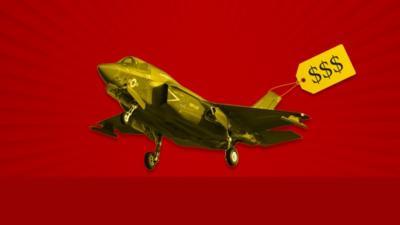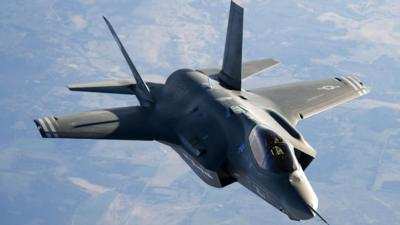A Tale of Two Tales
The flyaway cost of Boeing’s F-15EX Eagle II is approximately $90-million per each lot-two aircraft—some $7.5 million more than the going price of Lockheed-Martin’s lot-15 F-35A.

The USAF and Boeing finalized a contract for the F-15EX’s next three production lots on 28 September 2023. Under subject agreement, U.S. taxpayers will shell-out “approximately” $90-million for every lot-two F-15EX, an eye-watering $97-million for each lot-three jet, and a slightly-less-if-not-still-condsiderable $94-million per lot-four jet.
Negotiations for the first-lot of F-15EX fighters were completed in November 2022, with Boeing and the USAF agreeing on a flyaway price of $80.5-million for six jets (and two previously purchased test aircraft). Mathematically gifted readers will note F-15EX prices rise steeply year-over-year until the aircraft’s fourth-lot.
The USAF measures flyaway price in then-year dollars, which are adjusted for inflation.
By way of comparison, the current flyaway cost of Lockheed-Martin’s stealthy, slow, and thus far demonstrably unreliable F-35A—the iteration of the fifth-generation fighter in service with the USAF—is $82.5-million across the jet’s 15th, 16th, and 17th production lots—which are slated to be delivered to the service in calendar years 2023, 2024 and 2025 respectively.
The average flyaway price for the Short Take-Off Vertical Landing (STOVL) F-35B in service with the United States Marine Corps is $109-million per-aircraft.
Finally, the flyaway cost of the U.S. Navy’s carrier-launched F-35C is $102.1-million across lots 15 through 17.

A USAF spokesperson reported the service’s agreement with Boeing vis-à-vis the F-15EX finalized existing undefinitized (a near-perfect federal weasel-word) contract actions (UCA) for the machine’s second and third lots, a mechanism whereby the Pentagon issues dollar awards for purpose of getting work on a given project underway until specifics—such as price—are agreed upon. The fourth F-15EX lot was awarded in the absence of a UCA, thereby bringing the cumulative value of the three lots to $3.9-billion for 48 F-15EX fighters.
A Boeing spokesperson stated the second and third F-15EX lots would each consist of 12 fighters, and the fourth of 24. Lot-four deliveries are slated to begin in 2026.
Boeing Fighters vice-president Mark Sears set forth in a statement: “It’s essential that we provide the best value for our customers while offering an unmatched capability in the F-15EX. We are investing in our people and their development. We are using new automation in our factories. We are leveraging lean practices. We have implemented many other processes, with our teams and our suppliers, designed to improve all areas of work to include reducing costs,”
Mr. Sears added: “Inflation and its impacts are real and felt across our industry, but we continue to make the changes necessary to keep costs in check while growing our production capacity to meet demand.”
In virtual repetition of Sears’s sentiments, F-35 Joint Program Office spokesman Russ Goemaere stated: “The F-35 Joint Program Office is committed to finding cost reductions across the acquisition lifecycle. We are proud of the learning that has occurred and reduced costs for vastly increased fifth-generation capability that surpasses many fourth-generation aircraft in production today.”
Not to be out rationalized, Lockheed-Martin asserted: “We continue to deliver cost-competitive, unparalleled 5th Generation capabilities in the F-35. Lot over lot, the aircraft delivers enhanced capabilities to stay ahead of threats while managing costs.”
Regrettably, but not surprisingly, defense contractors the likes of Boeing and Lockheed-Martin are beholden to no standardized cost-quantification model. For instance, Lockheed-Martin’s quoted price for a new lot of F-35s pertains only to the machines’ airframes. The Bethesda, Maryland-based plane-maker discloses engine prices subsequently. Ergo, flyaway costs are a more comprehensive metric by which to assess taxpayer outlay for aircraft assets.
Notwithstanding the apparent simplicity of the flyaway concept, the definitions for such promulgated by stakeholders in the F-35 program are wildly divergent.

An Air Force spokesperson averred the F-15EX’s flyaway cost encompasses the “Major End Item (airframe, EPAWSS [Eagle Passive Active Warning Survivability Suite], engines, radars, and all other associated subsystems on the aircraft), as well as other applicable costs such as production non-recurring engineering, systems engineering and program management, and engineering change orders.”
Conversely, Mr. Goemaere stated the F-35 program office’s calculation of flyaway cost consists of the aircraft’s “Hardware (airframe, vehicle systems, mission systems, engine [and] engineering change order) costs.”
Mitchell Institute senior resident fellow Heather Penney suggested some of the differences in the term’s definition may be ascribable to the F-15EX and F-35 programs being in differing stages of production.
In an interview, Penney opined: “Because [the F-15EX is] kind of a new start, if you will, they’ve got production non-recurring engineering. So that’s the tooling and engineering stuff that you would need to include to get the production line up on-ramp.”
J.V. Venable, senior research fellow for defense policy at the Heritage Foundation and skeptic of the F-15EX program, disagreed with Penney’s assessment, pointing out numerous architectures indigenous to the F-15EX are decades old.
“It’s almost entirely the EPAWSS system,” Venable stated. “And so, if you’re looking for that being an extraordinarily large cost, I don’t think it’s going to be.”
Penney, who considers the costs of the two fighters realistic, remarked: “I do believe that the flyaway costs are reasonable, given the production rates of each individual line, how the companies are able to amortize cost and overhead across those production rates, and where each program is on their learning curve.”
Penney continued: “The costs are difficult to compare because the capabilities and the use cases for both aircraft are so very different. Not all fighters are the same. And so people will be tempted to make an apples-to-apples comparison, and that’s just not appropriate when we look at how very different the capabilities between F-35 and F-15EX are, as well as how those programs are structured.”

Whereas the F-35 is suited to penetrating anti-access/area denial zones and is slated for cutting-edge upgrades in future blocks, the F-15EX is a proven dog-fighter and air-superiority weapon. Furthermore, the F-35’s offensive and defensive capabilities are predicated wholly upon stealth and advanced technologies by which its afforded so-called over the horizon lethality—which is to say, F-35 adversaries are apt to find themselves destroyed and gone to their eternal rewards without ever having realized they’d been engaged. Deprived of its advanced targeting, weapons, and stealth technology, the F-35 is a comparatively slow, clumsy, toothless creature doomed to a grotesque death if pitted in a conventional dogfight against any fourth-generation MiG or Sukhoi fighter.
The F-15EX, while lacking the F-35’s erudite gadgetry, instantiates the ultimate evolution of the most lethal and robust fighter aircraft ever fielded by the U.S. Since its 1976 introduction, the F-15 has racked up over one-hundred combat victories and not a single loss. Superbly fast, agile, tough, and well-armed, the F-15EX is a pedigreed killer—a killer born.
F-35 proponents are quick to point out that during 2022’s Exercise Pitch Black, two RAAF F-35A fighters killed six RSAF F-15SG fighters in mock aerial combat. Contrariwise, F-15 proponents are keen to call attention to the F-35’s miserable mission capable rate, which according to a 2022 report compiled by the nonpartisan Congressional Budget Office (CBO) averaged 56-percent across all three subtypes.
Even the most impassioned F-35 adherents must concede that what cannot fly cannot fight.
 Airborne 05.10.24: Icon Auction, Drunk MedEvac Pilot, Bell ALFA
Airborne 05.10.24: Icon Auction, Drunk MedEvac Pilot, Bell ALFA ANN's Daily Aero-Term (05.13.24): ILS PRM Approach
ANN's Daily Aero-Term (05.13.24): ILS PRM Approach ANN's Daily Aero-Linx (05.13.24)
ANN's Daily Aero-Linx (05.13.24) Airborne-NextGen 05.07.24: AI-Piloted F-16, AgEagle, 1st 2 WorldView Sats
Airborne-NextGen 05.07.24: AI-Piloted F-16, AgEagle, 1st 2 WorldView Sats Airborne 05.08.24: Denali Update, Dad-Daughter Gyro, Lake SAIB
Airborne 05.08.24: Denali Update, Dad-Daughter Gyro, Lake SAIB






